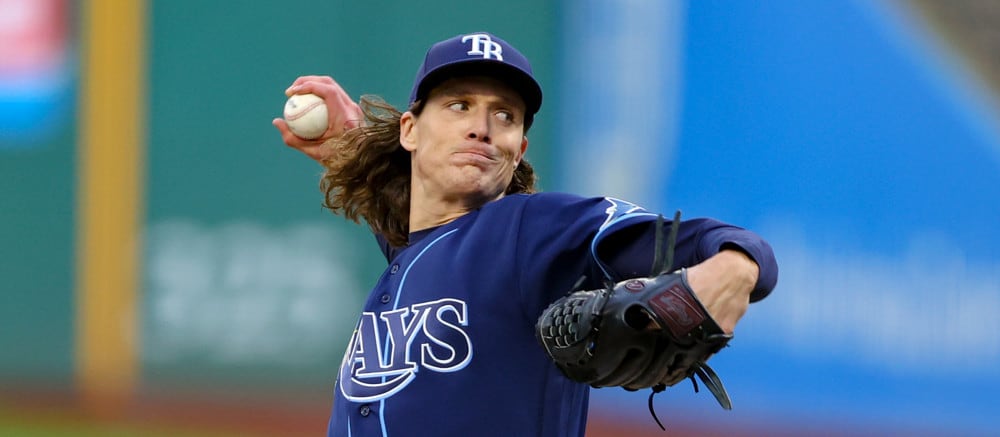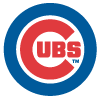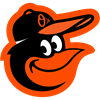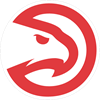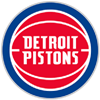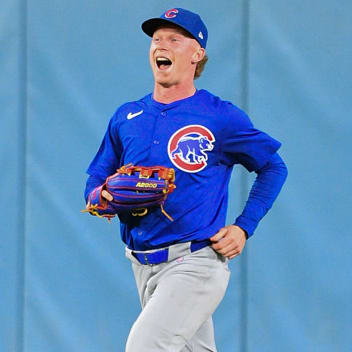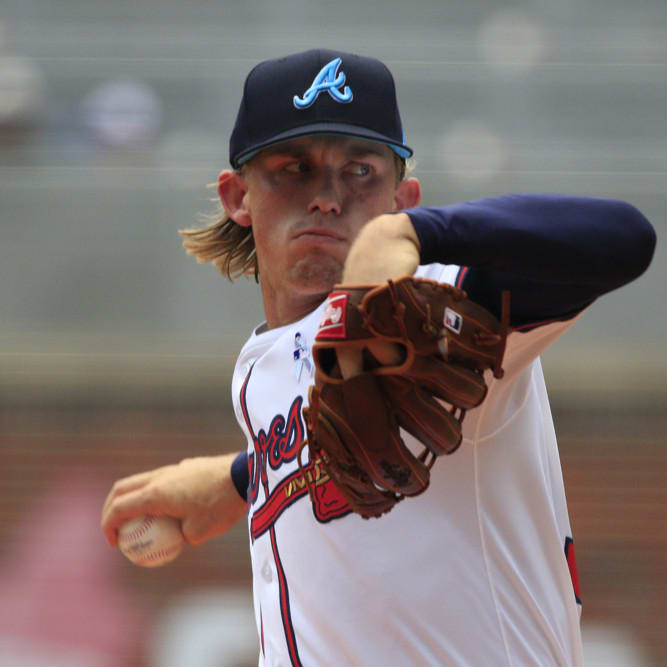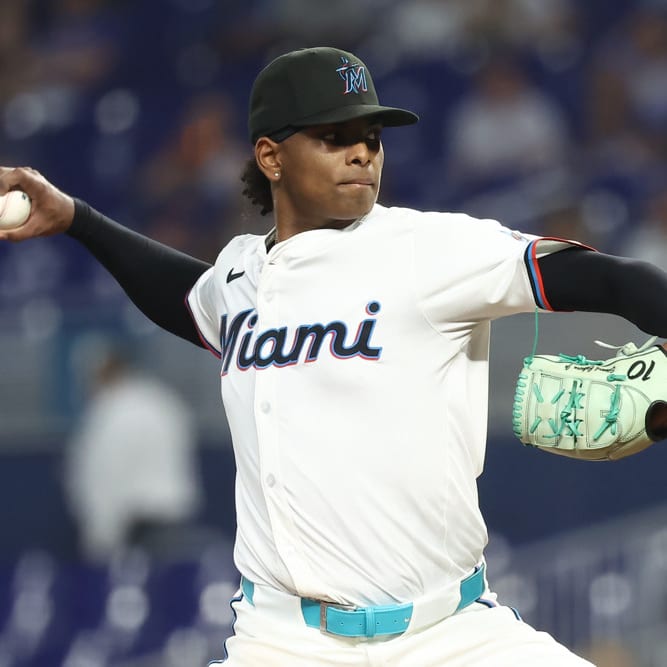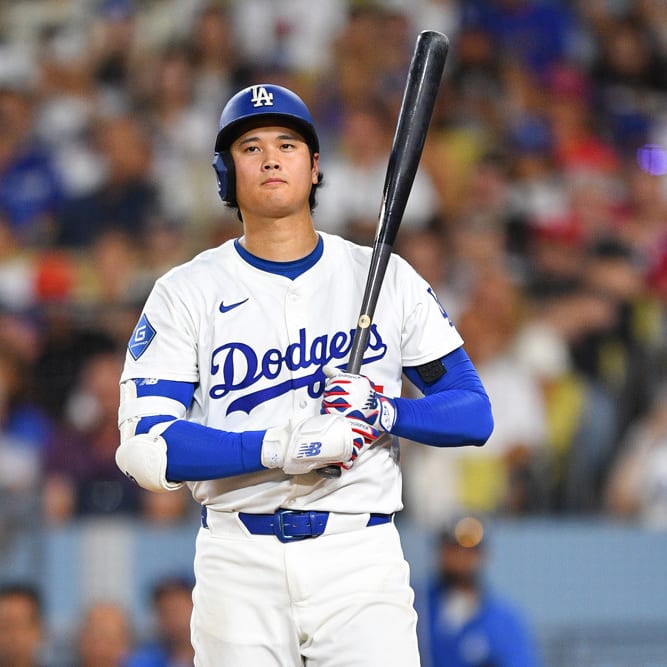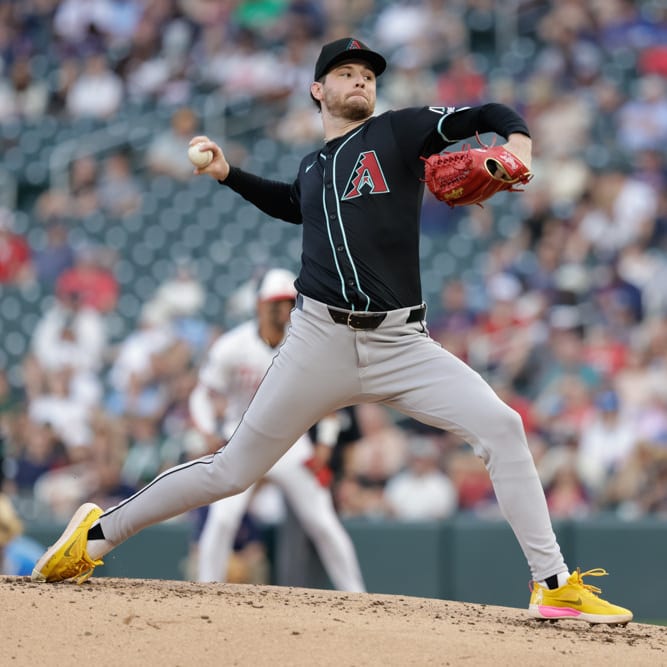We're back for the second edition of the MLB Best Ball series, and the focus will remain on Underdog. Last week, we took a look at evaluating hitters and finding some methods to identify values at various points on the draft board. This week, we'll shift from hitters to pitchers.
Sign up for Underdog to receive a free 6-month subscription to RotoWire and first deposit match up to $100 with promo code RWMLB. Click here to claim this special offer now.
General Scoring Notes
Before we fully jump into the analysis, we also have an evergreen article available for those new to best ball. As was covered in that article, Underdog does not have specific SP and RP spots. Instead, a team's three best pitchers will score points weekly. In addition, saves are not worth any points, which leaves closers as nearly worthless. Looking at recent results proves this point clearly. In 2022, Edwin Diaz scored 529 points, while Josh Hader scored 541 during his dominant 2021 campaign. By comparison, Dakota Hudson contributed 530 points last season, and he currently does not have an ADP.
We'll get into more detail about the stats to target later in this article, but both wins and quality starts are worth five points. In addition, a completed inning is worth three points. That incentivizes drafting pitchers that work deep into games.
Finally, it's important to understand the point thresholds for pitchers in the format on both a per-game and total basis.
| 2022 Rank (min. 100 IP) | Points per start |
| 1 | 49.65 |
| 5 | 40.64 |
| 10 | 39.29 |
| 15 | 38.32 |
| 20 | 36.51 |
| 25 | 35.87 |
| 30 | 34.89 |
| 35 | 33.68 |
| 40 | 32.21 |
| 45 | 31.5 |
| 50 | 29.95 |
| 2022 Rank | Total points |
| 1 | 1329 |
| 5 | 1249 |
| 10 | 1184 |
| 15 | 1095 |
| 20 | 1078 |
| 25 | 1020 |
| 30 | 983 |
| 35 | 948 |
| 40 | 898 |
| 45 | 848 |
| 50 | 824 |
Per-Game Production
Underdog Points per start (2022 season) | |
| Stat | R-Squared |
| K-BB% | .802 |
| IP/GS | .770 |
| K% | .722 |
| ERA | -.718 |
It's worth noting from a general standpoint that many of the same stats used to evaluate pitchers in more traditional 5X5 or category formats also apply to Underdog. Each of these statistics makes sense to focus on when looking for draft targets, but let's take some time to break things down. A strikeout is worth three points, so a pitcher with a lofty K% can become productive very quickly and make up for runs allowed by racking up punchouts. Pitchers that can work deep into games have an advantage as they can rack up points for completed innings while also increasing their chances for wins and quality starts. That makes K-BB% slightly preferable as compared to just K%. A pitcher isn't penalized for a hitter reaching base by Underdog scoring, but weak control will inflate a pitch count quickly.
Let's look at some values at current ADP based on these findings:
- Jacob deGrom has the highest projected K-BB% at 29.3% according to Steamer. He's currently the fourth starting pitcher being selected.
- Tyler Glasnow has the seventh-highest projected K-BB% at 23.4%. He's currently the 23rd starting pitcher being selected.
- Andrew Heaney has the 12th-highest projected K-BB% at 21.5%. He's currently the 72nd starting pitcher being selected.
- Hunter Greene has the 15th-highest projected K-BB% at 21.2%. He's currently the 28th starting pitcher being selected.
- Nick Lodolo has the 20th-highest projected K-BB% at 20%. He's currently the 34th starting pitcher being selected.
Using RotoWire's best ball cheatsheet, we can identify pitchers that are projected as values at their current ADP based on per-start volume:
- Nick Pivetta is projected to throw 6.56 innings per start, the second-highest average in the league. He is currently the 78th starting pitcher off the board.
- Framber Valdez is projected to throw 6.5 innings per start, the third-highest average in the league. He is currently the 14th starting pitcher off the board.
- Cal Quantrill is projected to throw 6.28 innings per start, the ninth-highest average in the league. He is currently the 81st starting pitcher off the board.
- Ranger Suarez is projected to throw 6.05 innings per start, the 25th-highest average in the league. He is currently the 97th pitcher off the board.
- Merrill Kelly is projected to throw 5.96 innings per start, the 28th-highest average in the league. He is currently the 57th pitcher off the board.
In some cases, these statistics will work against each other. For example, we may not expect Heaney or Glasnow to work deep into games. Pitchers who excel in all of the areas above are elite and should be selected higher in drafts. Once these more well-rounded pitchers are off the board, look for pitchers who are projected to stand out in at least one of these statistical categories.
Volume
We've touched on the importance of volume on a per-start basis, but the ability to rack up innings throughout the season is also vital. As true workhorse pitchers become rarer across the league, rostering a pitcher that has a chance to pitch deep into their start every fifth day is incredibly valuable in this format. This is illustrated by looking at how pitchers accrue total fantasy points in a single season:
Underdog Total Points (2022 season) | |
| Stat | R-Squared |
| IP | .862 |
| GS | .705 |
| K-BB% | .456 |
| K% | .345 |
Because there is a reward for volume stats such as IP, W and QS, volume over an entire season is predictably important. That's even more the case because those stats also have a positive relationship, creating a similar phenomenon to that of stacking a lineup or a quarterback with their pass catchers in DFS contests. Some of the pitchers with the highest inning totals per RotoWire projections that present value at their current ADP:
- Framber Valdez is projected for 195 innings, tied for second most in the league. He is currently the 14th pitcher selected.
- Adam Wainwright is projected for 194 innings, tied for fourth most in the league. He is currently the 61st pitcher selected.
- German Marquez is projected for 188 innings, tied for eight most in the league. He is currently the 69th pitcher selected.
- Brady Singer is projected for 178 innings, tied for 15th most in the league. He is currently the 51st pitcher selected.
- Jose Berrios is also projected for 178 innings. He is currently the 40th pitcher selected.
Conversely, pitchers with positive skills but significant risk of injury will lose value. Some pitchers with health concerns as spring training approaches include:
- Kyle Hendricks had his 2022 season cut short with a shoulder strain and he may not be ready for Opening Day.
- Tarik Skubal underwent flexor tendon surgery in mid-August and is not projected to return until the summer months.
- Walker Buehler isn't projected to pitch until 2024, but he is the 85th pitcher being selected. Both Pivetta and Quantrill are going in a similar ADP range and were highlighted as potential values.
- Frankie Montas is expected to miss at least the first month of the season with shoulder inflammation. He is the 67th pitcher off the board.
There are also pitchers known to be at risk of having their workload limited entering the season. DeGrom, Clayton Kershaw, Heaney and Glasnow are all examples, though that's not an exhaustive list. Rookie pitchers expected to make an impact such as Grayson Rodriguez are likely to be handled carefully by their teams, meaning they may work shorter stints or have their turns through the rotation skipped during the season.
Conclusion
Due to injury risk, particularly relative to hitters, it's difficult to find a lot of pitchers that overlap elite skills with relatively safe workload expectations. That was highlighted in this article, as some of the players with projected standout skills (Glasnow, Heaney, and deGrom) have struggled to throw a lot of innings in recent seasons. Similarly, pitchers such as Wainwright, Pivetta and Quantrill don't jump off the page with their skills. Personally, my goal is to mix and match risk vs. stability in a draft. For example, teams that draft a player like Glasnow or deGrom might want to pair them with a player such as Quantrill later in the draft to take advantage of each of the highlighted skill sets. Conversely, for teams that draft a player such as Valdez or Sandy Alcantara in the early rounds, shooting for the upside of a Heaney late becomes a more viable option. Unsurprisingly, drafters are more drawn to skills than durability when looking at ADP, so it makes sense to target players with high per-game potential early and pair them with likely high-volume contributors in later rounds.


